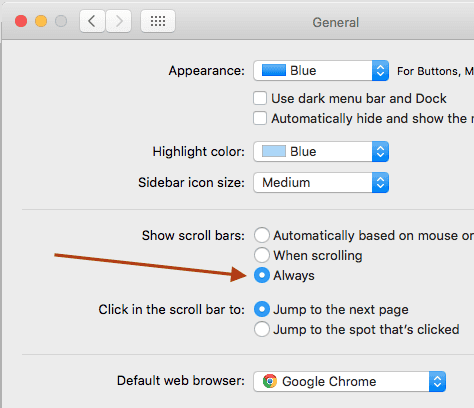

- HOW TO ALWAYS SHOW MENU BAR ON MAC UPDATE
- HOW TO ALWAYS SHOW MENU BAR ON MAC SOFTWARE
- HOW TO ALWAYS SHOW MENU BAR ON MAC MAC
Restart your MacĪlthough it’s frustrating, when macOS gets into a tangle sometimes the only solution is to restart your MacBook! Once your Mac restarts, the Dock should be back to normal.

The Dock will now be stopped and restarted automatically, which may be enough to resolve your problem.
Press the “Enter” key on your keyboard. Copy/paste the following command into the Terminal:. 
Navigate to “Applications > Utilities” and launch the Terminal application.Whenever you encounter a problem with your Mac, it’s always worth closing the offending app or piece of software, and then relaunching it, to see whether this resolves your problem.Īlthough you can’t close the Dock in the traditional sense, you can restart it using a Terminal command:
If you’re running an earlier version of macOS, then the update process is slightly different: If an update is available, then click the “Update Now” button to install.Select the “Apple” icon from your Mac’s menu bar.
Your Dock should once again become a permanent onscreen fixture.Īre you running the latest version of macOS?Īpple have a reputation for thoroughly testing their software, but no software is completely immune to bugs! If you’re not running the latest version of macOS, then there’s a chance you’re encountering a problem that’s already been fixed in a subsequent update.
Find the “Automatically hide and show the Dock” setting, and select it. Navigate to “System Preferences… > Dock.”. Click the “Apple” logo in your Mac’s menu bar. To restore your Dock to its original settings: If the Dock reappears, then you’ll know it’s set to hide automatically. To check whether your Dock is set to hide automatically, move your cursor to the area where the Dock normally resides. Alternatively, if you recently installed some new software, then it might have modified your Dock’s settings without your explicit permission. Even if you have sole custody of your Mac, there’s a chance you might have inadvertently enabled this setting, by triggering the “Option + Command + D” shortcut. If you share your Mac with other people, then there’s a chance they might have dipped into your “System Preferences,” and modified your Dock’s settings. Move the cursor to the upper-left corner of your current window, and then click the green button (where the cursor is positioned in the following screenshot).īy default, the Dock is set to remain onscreen permanently, but there’s a setting that automatically hides the Dock whenever you aren’t hovering over it. There’s no way to make the Dock a permanent fixture in fullscreen mode, so if you want the Dock to quit its vanishing act, then you’ll need to exit fullscreen mode. If you’re currently in fullscreen mode, then you can temporarily uncover the Dock by moving your cursor to the area of the screen where the Dock would usually be the Dock should appear for a few seconds, and then vanish. Whenever you enter macOS’ fullscreen mode, the Dock is hidden automatically to give your apps and windows more onscreen space.







 0 kommentar(er)
0 kommentar(er)
